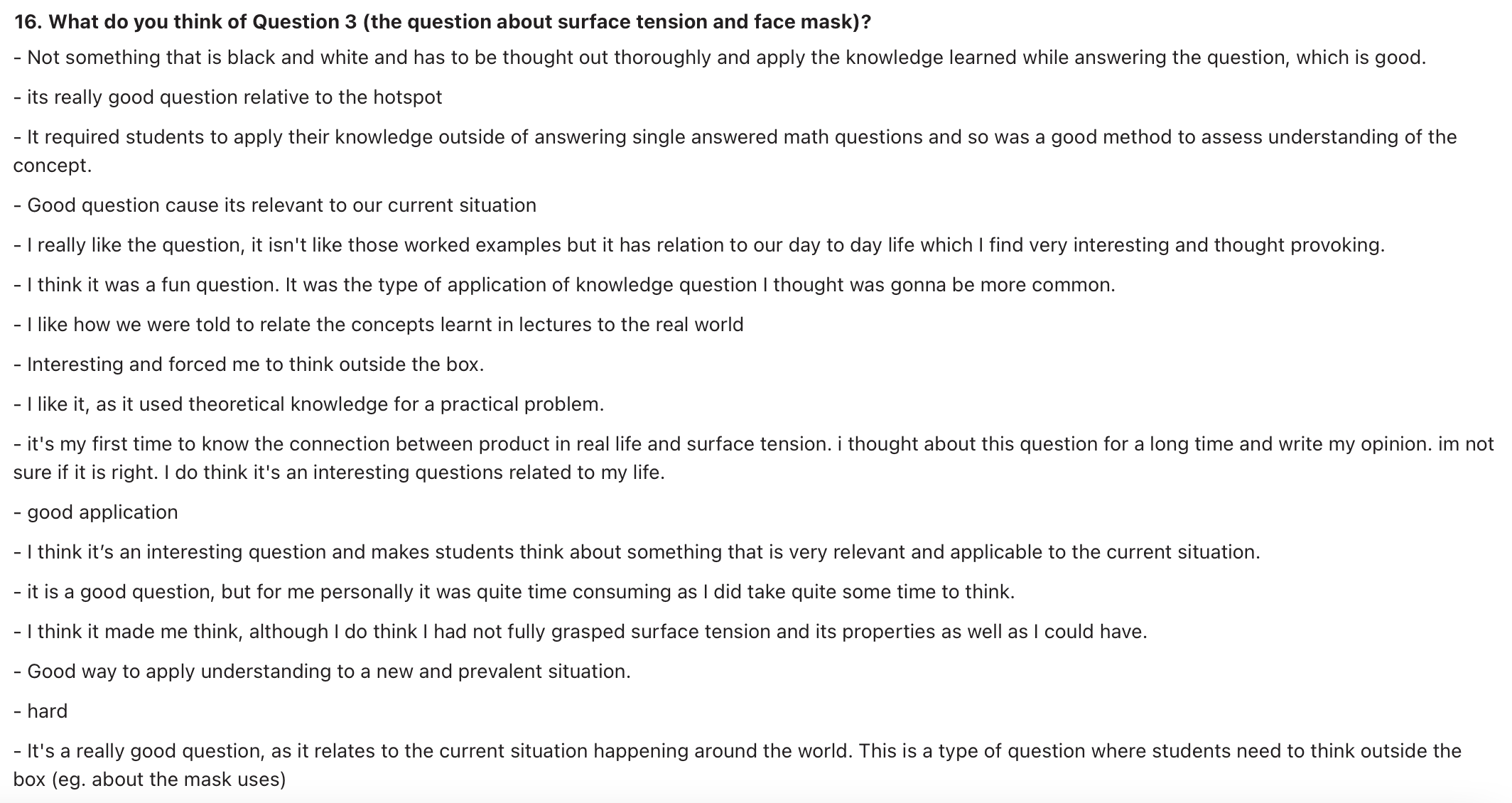I first taught CEIC2001 Fluid and Particle Mechanics, a Level 2 engineering science course, in 1999 as a postgraduate teaching assistant. My doctoral research was on the computational modelling of fluid and particle interactions, and I wanted to engage engineering students with my research area. In 2016, I became the Convenor for this course. In this role, I updated the curricula and designed a wide range of learning activities and resources to support students undertaking this course.
Design 1 • Designs curricula, learning activities and resources to enable a range of learners to achieve course learning outcomes
When I first started teaching this course, one of the challenges I had was the prescribed textbook was rudimentary, dry and had anachronistic examples. I felt more was needed to help my students understand the critical concepts in fluid and particle mechanics, so I started to prepare additional learning aids for my students. I began to incorporate animations and videos into my lectures to help my students visualise and understand key concepts. I used examples that my students were familiar with, such as water flowing out of a showerhead, to help my students connect the abstract concepts and equations they learnt with familiar fluid behaviours. I made my lectures more engaging by using Garr Reynolds and Larry Lessig's presentation methods, both of which expound the use of high-quality images, attractive charts or graphs, and short statements to capture the audience's attention and present difficult concepts. I also developed engaging experiments that the students could participate in during class.

To create better resources for my students, I applied for several teaching micro-grants from my School (total $18,000) to develop a series of worked examples that showed how the Wales-Woods Model is used to solve problems fluid and particle mechanics. These examples include adaptive questioning, which builds the students’ knowledge, identifies misconceptions and guides students in solving long-form questions. This approach scaffold learning and reduce cognitive load by allowing students to focus on understanding the process or heuristic that leads to a solution, evaluate the merits of different solution paths, and verify the validity of the answers and solution pathways.
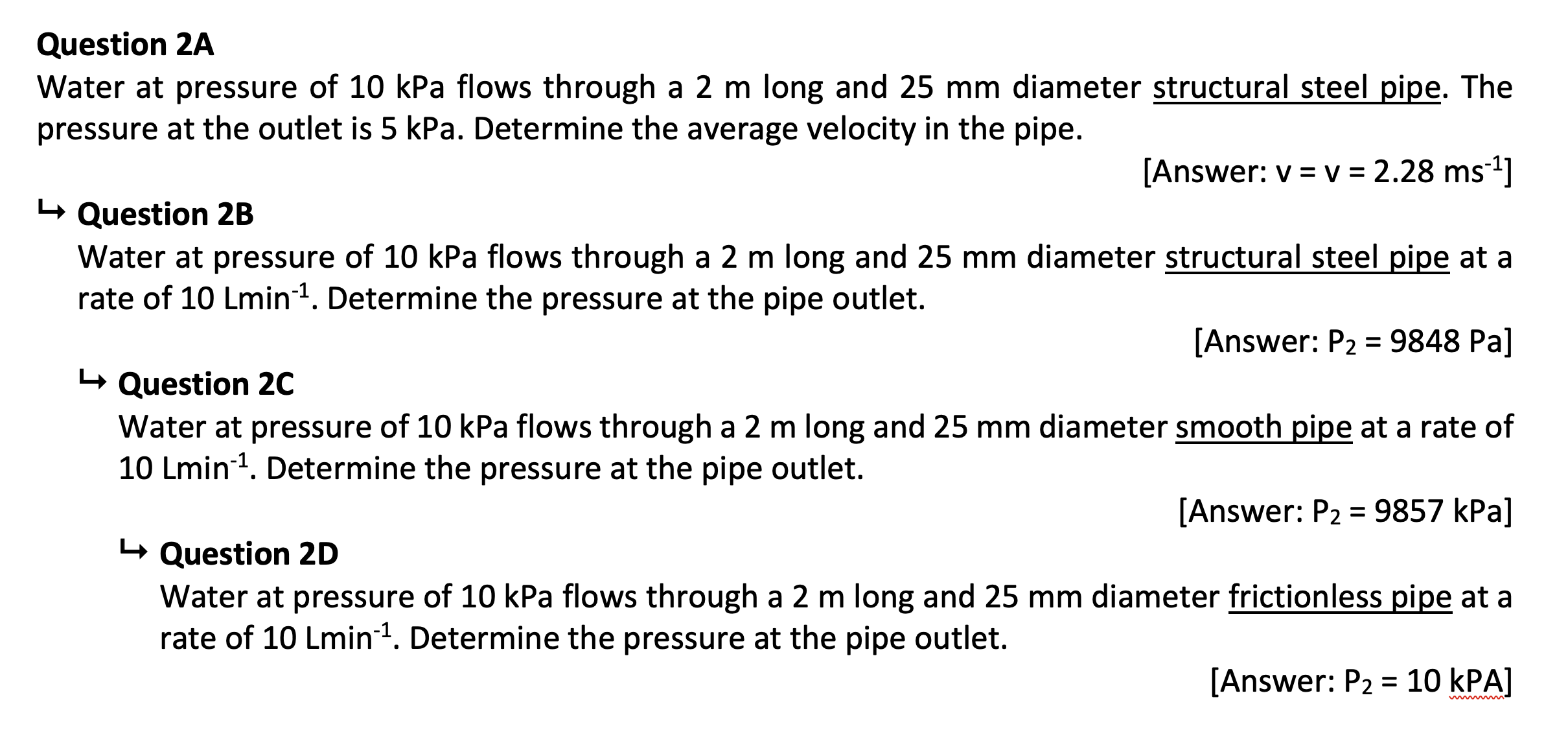
I also secured active learning spaces with configurable seats and tables, whiteboards and digital screens, for my tutorial classes. I also create virtual study rooms using the Microsoft Team communication and collaboration platform. These physical and online space allowed my students to engage in group discussion, cooperative problem-solving, co-creation of learning artefacts, and provide feedback, support or encouragement to each other. I used the Process Oriented Guided Inquiry Learning (POGIL) approach which help instils a variety of important professional skills, including communication, teamwork, empathy and accountability by allocating specific roles and responsibilities to each student during the group interactions.
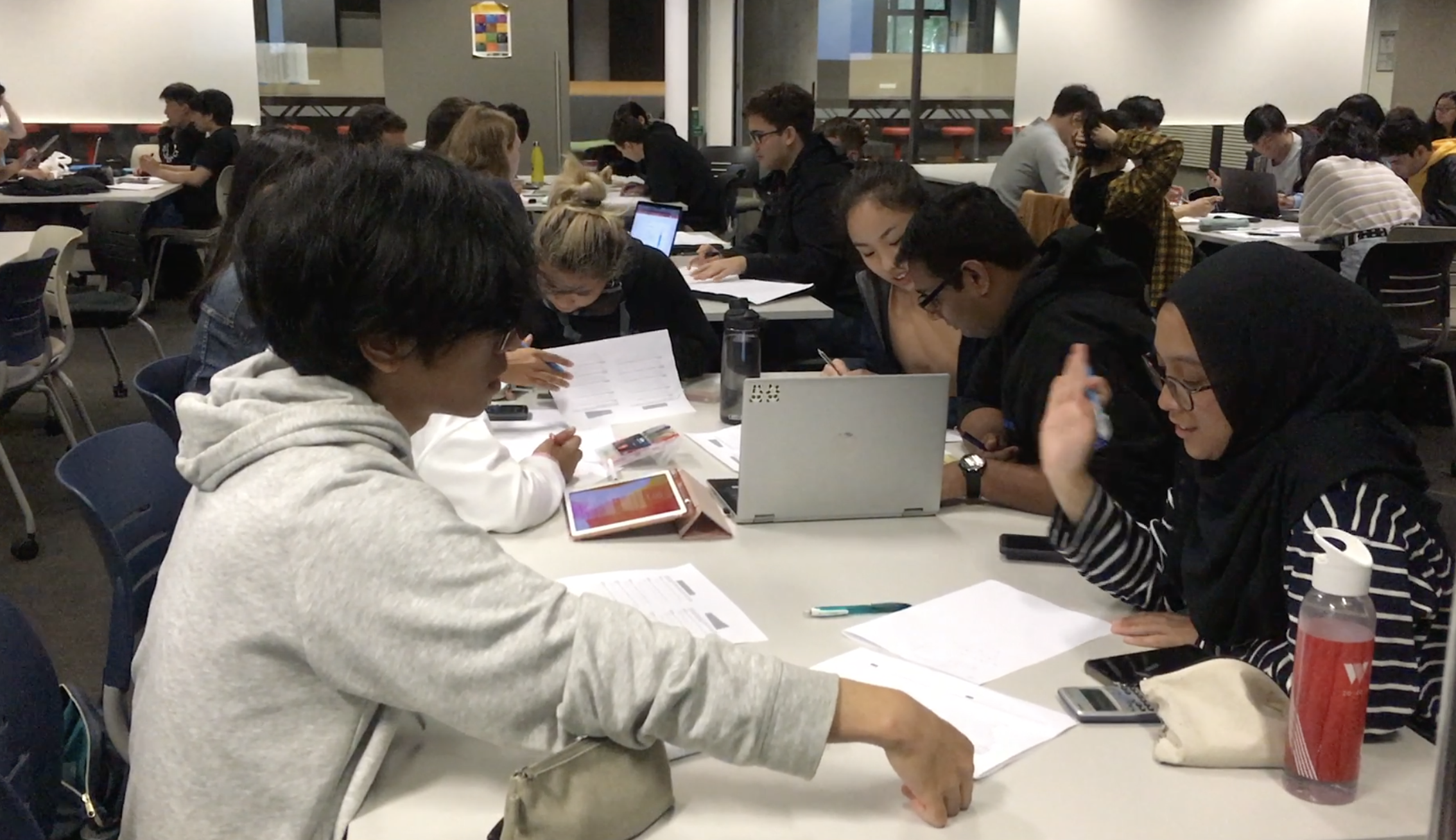
I used Padlet, an online bulletin board, to share the learning artefacts produced by each group. The students and I can view each group’s work on Padlet, as well as the working groups from other tutorial classes, and then post comments and feedback, or ask further questions. This online sharing creates an online learning community and permits students who are unable to attend the tutorial in person (due to work or family commitments, long commute or other personal reasons) to still engage with the learning process and be a part of the learning community.
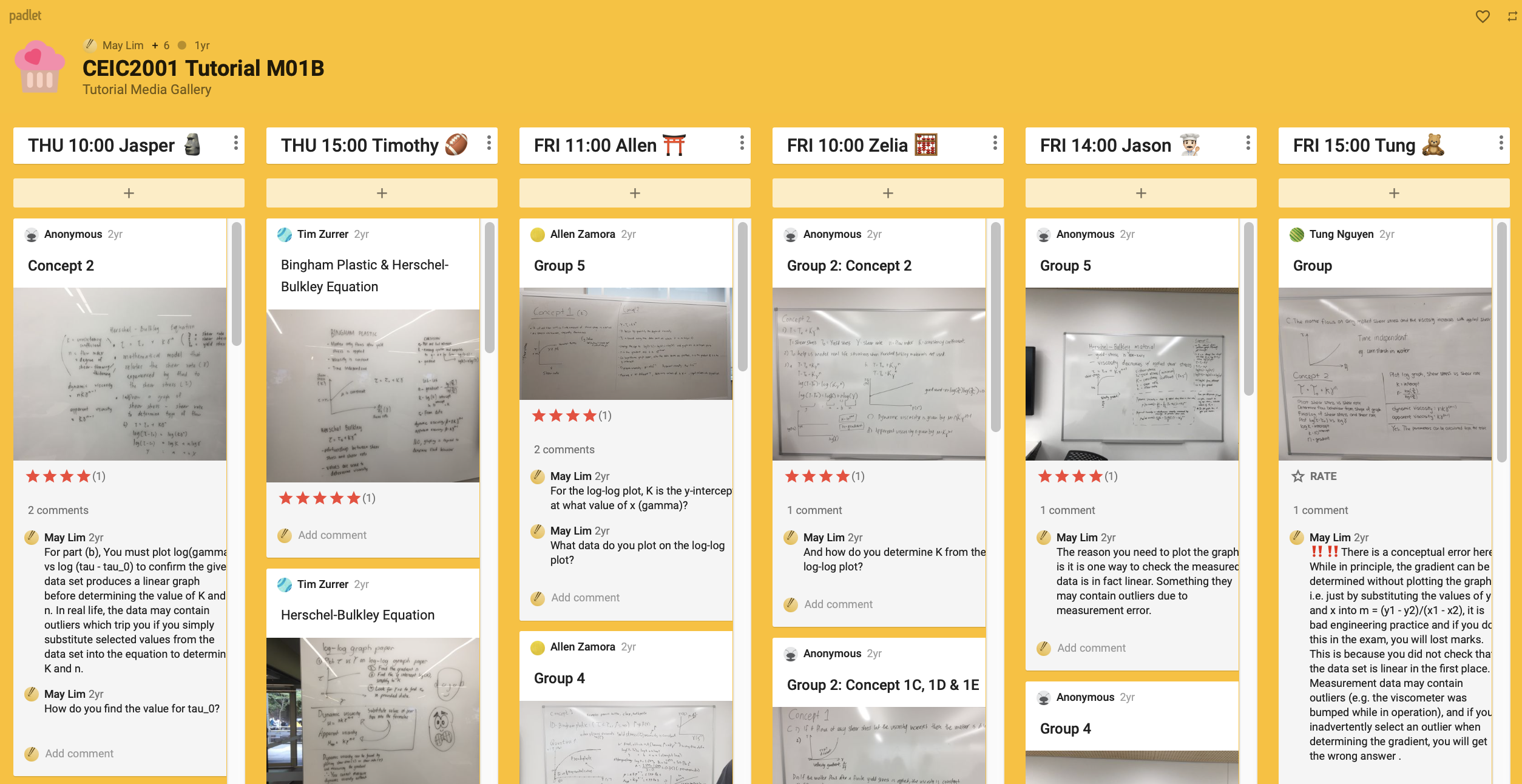
Design 2 • Engages students as partners in development of curricula, learning activities and resources
I was awarded $38,000 in combined funding from UNSW’s Faculty of Engineering and Pro-Vice Chancellor Unit to develop a Moodle question bank that is shared between three engineering schools. I led the development process and engaged a student partner to act as a conduit between all the academics involved. This approach ensured a smooth transition of the development process from one stage to another. In total, the team created more than 1,000+ questions. The developed resources enabled flipped mode instruction and low stakes formative assessments to be delivered, which in turn helped bridge the difference in student capabilities in the course.
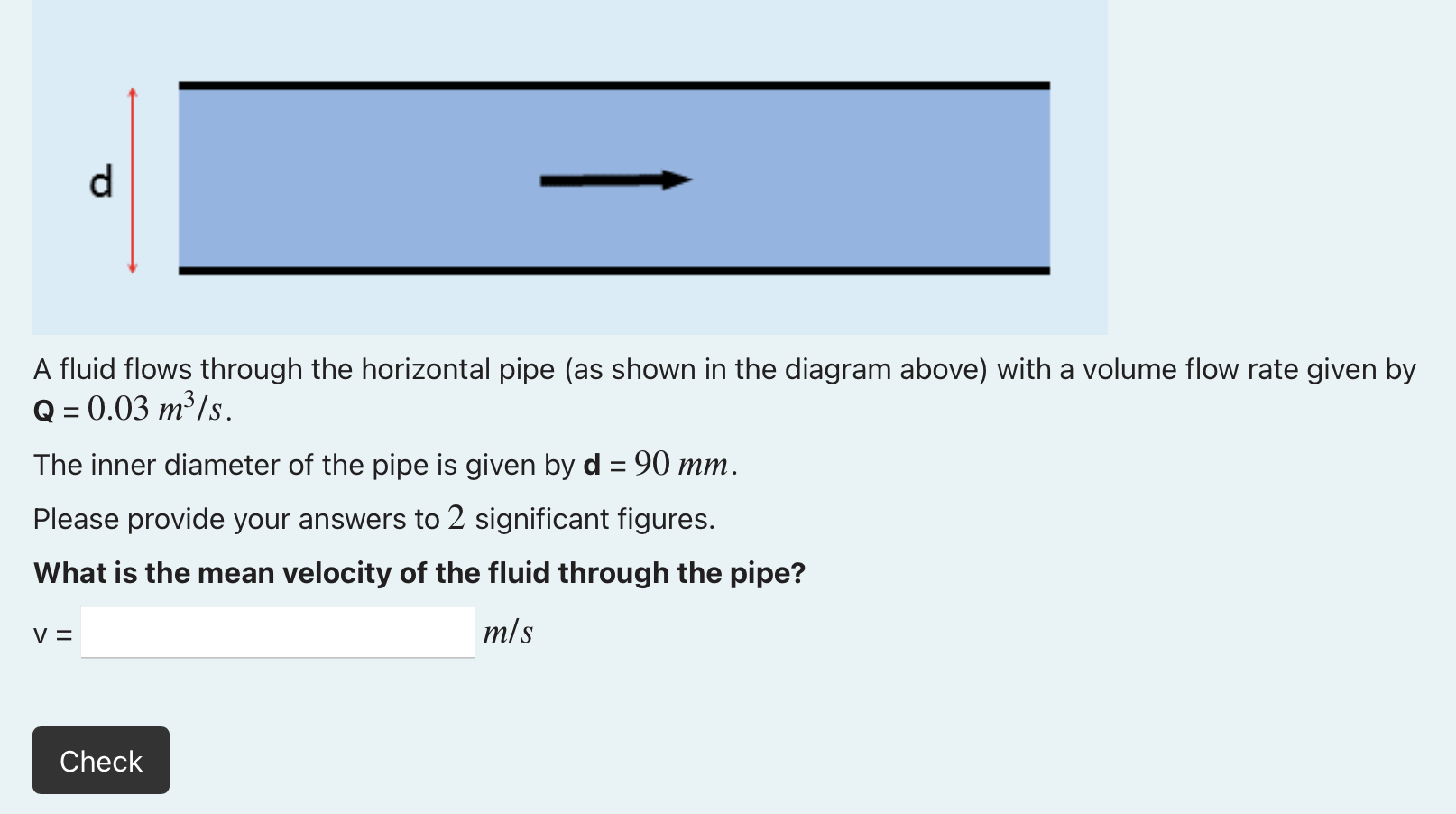
Design 3 • Designs and sequences assessment tasks aligned with course and program learning outcomes
I restructure the course as nine core modules taught in four sequenced blocks of lectures, in-class and online learning activities, practice and assessment tasks. I made the course learning outcomes, prior learning, new knowledge, connections between the modules and relevant engineering competency explicit to the students. I monitor student comprehension in formative assessments, including take-home assignments, online quizzes and mock quizzes. I create multiple opportunities for students to elaborate on the knowledge and concepts taught in the course through various online interactions with the instructor and other students. These interactions are multi-media and may include retrieval practice, online discussions, and co-creation of learning artefacts and concept maps (read my microblog "Rheology Class"). These activities reinforce and consolidate the student’s learning and prepare them for the summative assessment by providing many opportunities to retrieve, apply, test or demonstrate their knowledge over a spaced period of time.
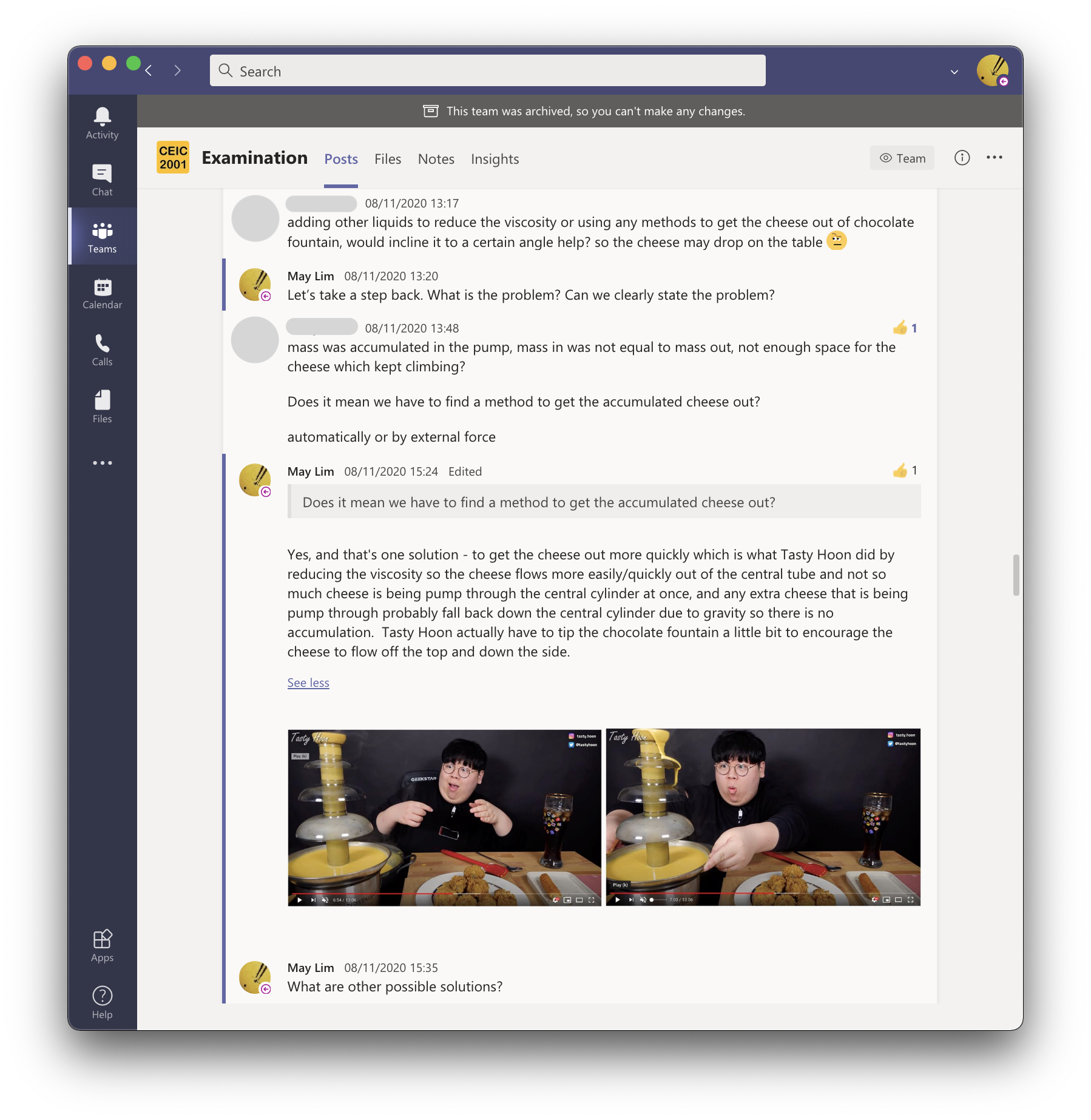
Design 4 • Provides students with constructive, actionable feedback on their performance and analyses assessment results to inform teaching practice
I create frequent opportunities for students to received feedback on their performance, including peer feedback, formative assessments (e.g. take-home assignments and mock quizzes) and summative assessments (e.g. examinations). I instruct my students on how to undertake evaluative judgements on their performance and expose them to metacognitive activities such as how to approach each learning and assessment task, how to monitor their comprehension and how to evaluate their progress. I shared the cohort's responses to metacognitive wrappers to increase the student’s individual and group awareness of the learning process after each assessment task. My approach helps students develop awareness and ownership of their learning process through affect regulation, understanding strengths and weaknesses, and aligning their actions and efforts with their academic goals.
